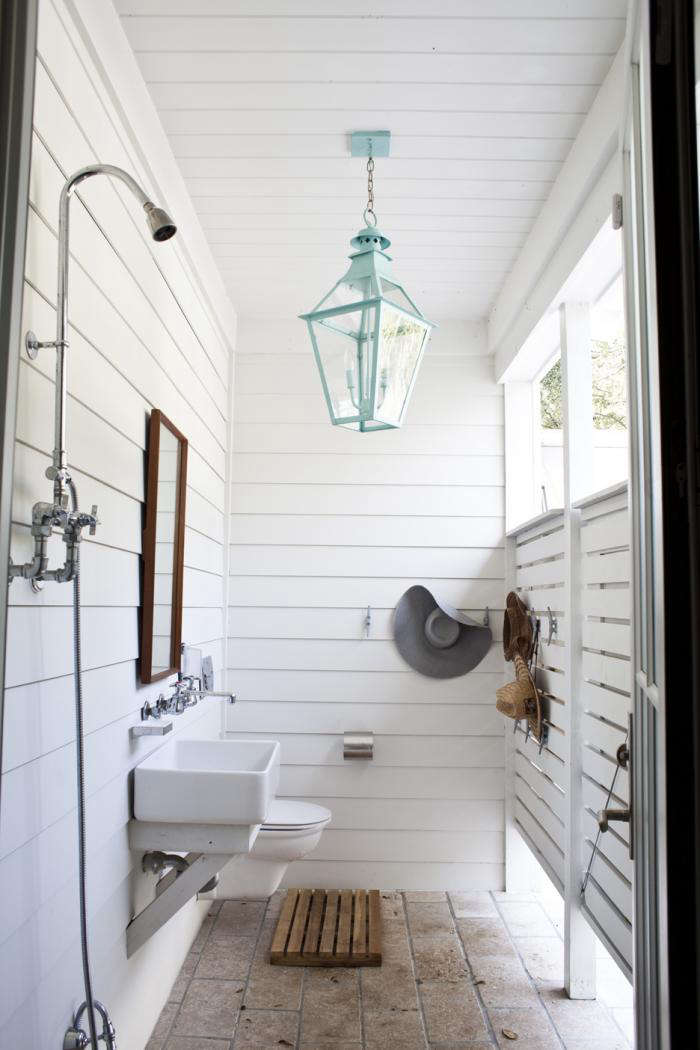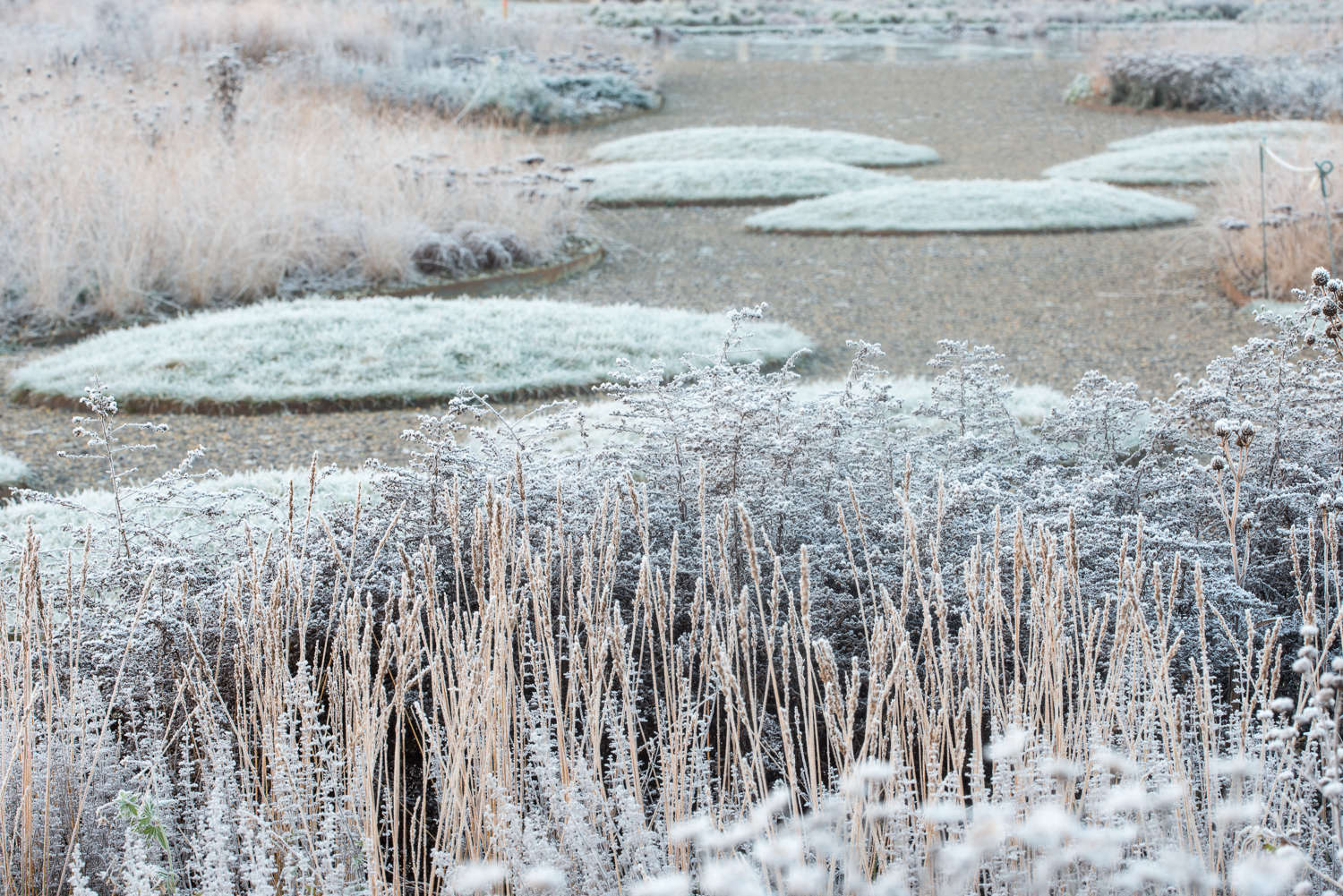Outdoor showers are what I look forward to most during our annual summer excursion to the North Carolina shore. More than swimming in the warm ocean, curling up with a book under the umbrella with my toes in the sand, or attacking a pile of peel-and-eat shrimp, it’s the ritual of showering in the open air that I love. “You are showering again, Mom?” is a familiar refrain.
Every year I ask the same question: “Why don’t I have an outdoor shower at home?” And, every year I return determined to figure that out. But then I don’t know where to start. (Plumbing? Drainage? Privacy?) Well, enough. This year I embarked on a mission to find out everything there is to know about installation. Here’s what I learned.
How do outdoor showers work?

Space requirements aren’t as restrictive as I first assumed. Here’s what to consider:
- You need a firm, level surface that can withstand water and foot traffic. Good spots include decks (even an upper-level deck, if water can drain), lawns, stone patios, stone paths, and gravel driveways.
- Think about how you intend use your outdoor shower. To clean dogs and muddy feet? To rinse off after a day at the beach? Or are you lucky enough to live in a warm climate where you might have your daily shower outside? Site the shower for convenience.
- Privacy is key. I think my upper deck would be a great spot (for convenience, views, and sunlight), but my neighbors might not agree.
- A sunny area is best, both for the user’s benefit and to prevent mold and rot.
- Finally, the location must be accessible to plumbing (see below for details).

Can you have outdoor showers without plumbing?

How do you add plumbing for outdoor showers?
Outdoor showers can be plumbed with a garden hose or with fixed pipes. Here are three options, from simple to more complex. Be sure to check with your contractor or jurisdiction about permits and gray-water runoff requirements.
Cold-Water Hose Plumbing: The easiest setup involves running a simple garden hose between a faucet and a shower fixture. Yes, this means cold showers only. But that may be all you need if you’re using the shower only in hot summer months or to rinse off dogs or sandy feet.

Hot and Cold Outdoor Faucets: You can tap into your home’s hot-water supply for an outdoor shower. The easiest way is to have a plumber install a hot-water faucet next to your existing (and cold water only) garden faucet. Then you can attach two hoses easily and quickly to the outdoor fixture. Make sure to use heavy-duty hoses. For more durability, consider stainless steel washing-machine hoses. Installation is a breeze with this option, and it’s less costly than permanent water lines. It also avoids frozen pipes in the winter, as you can just detach the hoses and store them.

Fixed Plumbing Pipes: Hooking up to the permanent water lines in your home is another option. Pipes can be run a short distance up the side of the house to be attached to a shower fixture that’s mounted onto the siding. Plumbing also can be installed to supply water to a shower positioned away from the house via pipes that exit the house and are buried underground. While buried permanent lines are more aesthetically pleasing than hoses, they’re susceptible to freezing and cracking in cold climates and must be drained in the winter.
How do outdoor showers drain?
Outdoor showers don’t generally need complex drainage systems, especially if the shower is installed a distance from the house, or if the pitch of the land directs water away from the structure. Here are some common drainage solutions. (Whatever your situation, we recommend consulting with a professional about drainage.)

Direct Garden Drainage: The most common, easiest, and eco-friendly way to drain is to let the gray water seep directly into your garden. Will this work for your shower site? If the ground is reasonably porous, then the answer is yes, as long as the shower isn’t used too often and isn’t close to your house’s foundation. You can test how quickly water will seep into the soil of a potential shower site by dumping a large bucket of water and timing how long it takes to disappear. If the water remains on the surface for five or more minutes, you may want to consider a dry well or French drain.
French Drain or Dry Well: If your shower is going to be on the facade of your house or nearby, you need to keep water away from the foundation. Know your existing perimeter drainage system to decide how best to integrate shower drainage. If you have perimeter French drain pipes, be sure your shower is positioned to take advantage of the existing drainage system. Alternatively, you can install a simple dry well (like a French drain without the pipe) by digging a deep pit and filling it with gravel to distribute water slowly into the surrounding soil.
Fixed Drain: Some more elaborate setups use fixed drains that feed into a house’s wastewater system.

An open-air shower should be just that, says Idaho-based landscape architect Ben Young: “You’re out there in nature, so why not experience that feeling of being in nature?”
For more, see Private Idaho: A Rustic Outdoor Shower in Sun Valley.
Additional Drainage Requirements
Shower Drainage Pans: Similar to the shower pans on indoor showers, drainage pans connected to a hose can collect, direct, and drain water away from the house and into the garden or an existing drain.
Do outdoor showers need a shower base?
Yes, for the comfort and stability of the person taking a shower. The base should be a water-resistant material that is stable to stand on and permeable for drainage. It can be an existing surface, such as decking or a stone patio. Or, if an outdoor shower is installed in a location with a slippery or uncomfortable surface such as gravel, you can set a small base on top of the surface.

How do you build an enclosure for an outdoor shower?
This is a question of placement and privacy. How much do you want to bare? Enclosures can range from a simple shower curtain to a wooden stall with a hinged door. An enclosure must allow for air circulation so it dries quickly (to prevent mold and rot). Also consider the landscape: Do you have a hedge or row of trees that could screen the shower?
Martha Stewart offers an Outdoor Shower Screen Project for freestanding showers.

How can I make an outdoor shower … or do I need a plumber?
This depends on the complexity of the project. If you’re trying to keep costs down, you can purchase a simple hose-fed shower and be good to go. If you want something more permanent and are handy with a wrench, see Sunset’s tutorial on How to Make an Outdoor Shower. For complicated set-ups, we recommend hiring a professional. In addition to plumbing, you may need to alter siding, build an enclosure, or add a surface to stand on. If your projects require any or all of these, you might need a contractor rather than a plumber. Several companies, including Manufactum, Tectona, and Coro, offer hose-ready outdoor showers.
For more outdoor showers, see 10 Easy Pieces: Instant Outdoor Showers. And, for specific resources see High/Low: Rugged Outdoor Shower Fixtures and Outdoor Bathing Area on a Manhattan Rooftop.
For more outdoor projects, browse all of our Hardscaping 101 features.
Finally, get more ideas on how to integrate and design an outdoor shower with our Hardscaping 101: Outdoor Showers design guide.
















Have a Question or Comment About This Post?
Join the conversation (8)